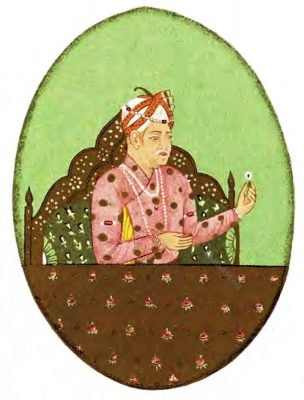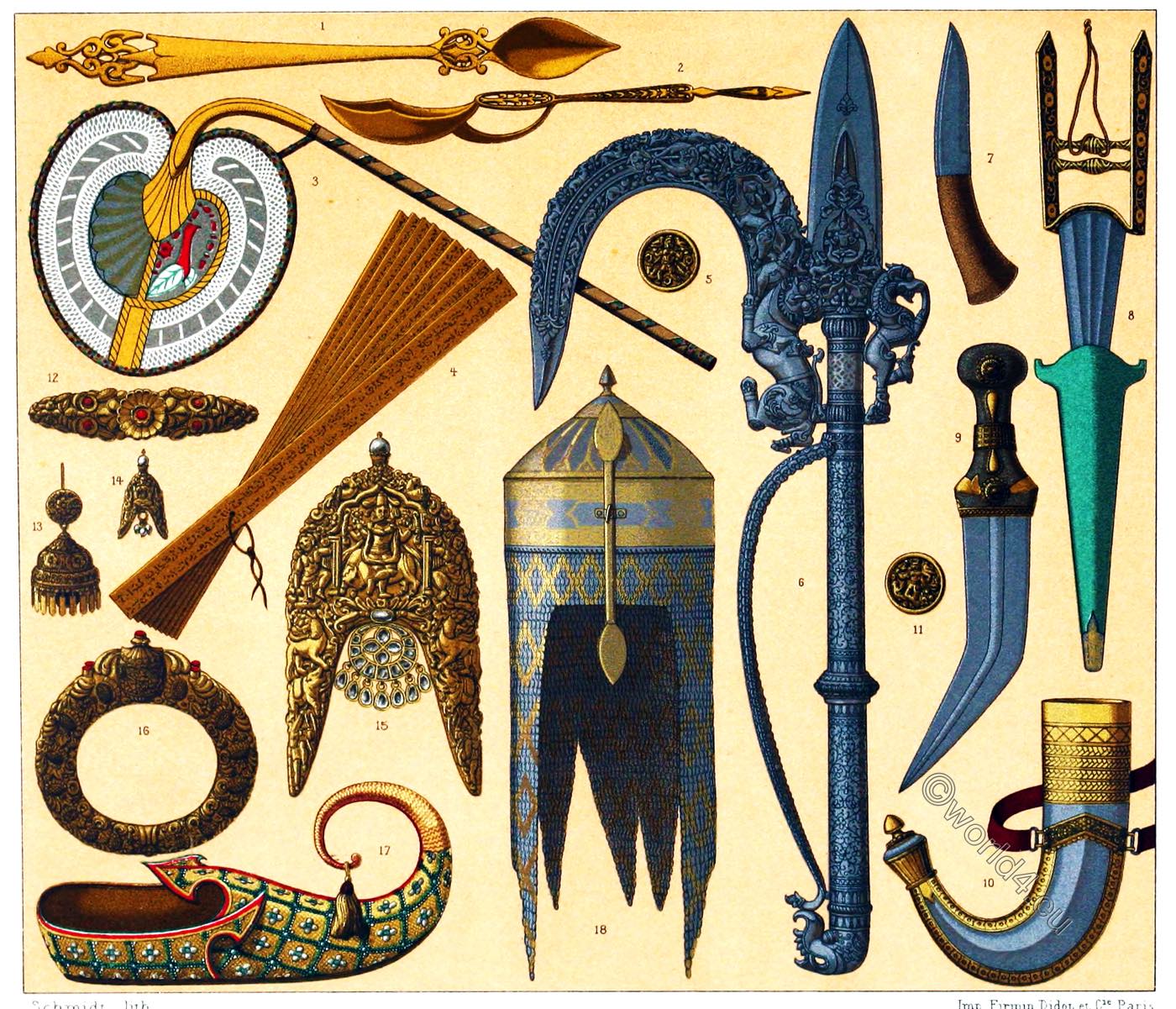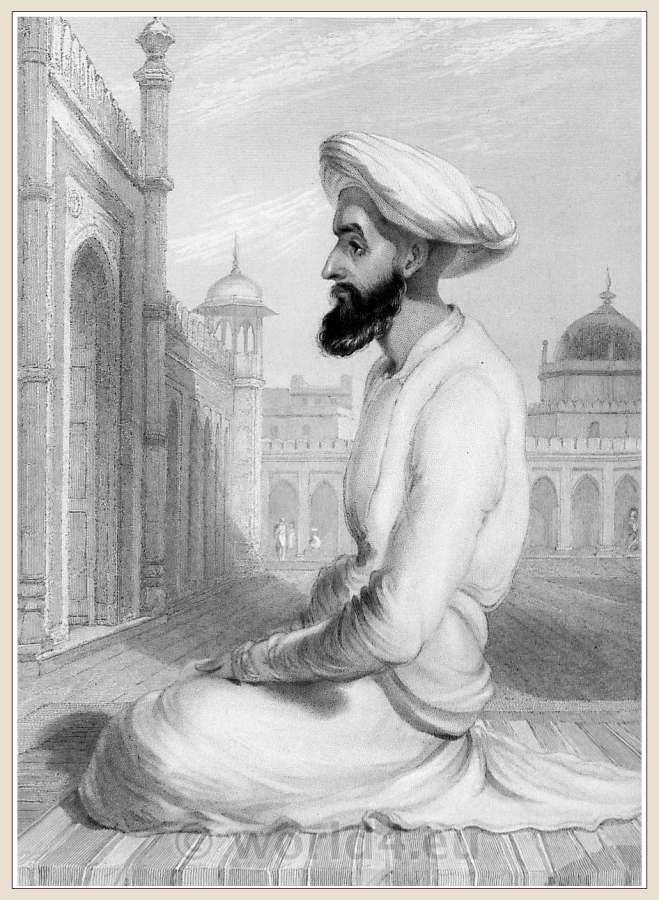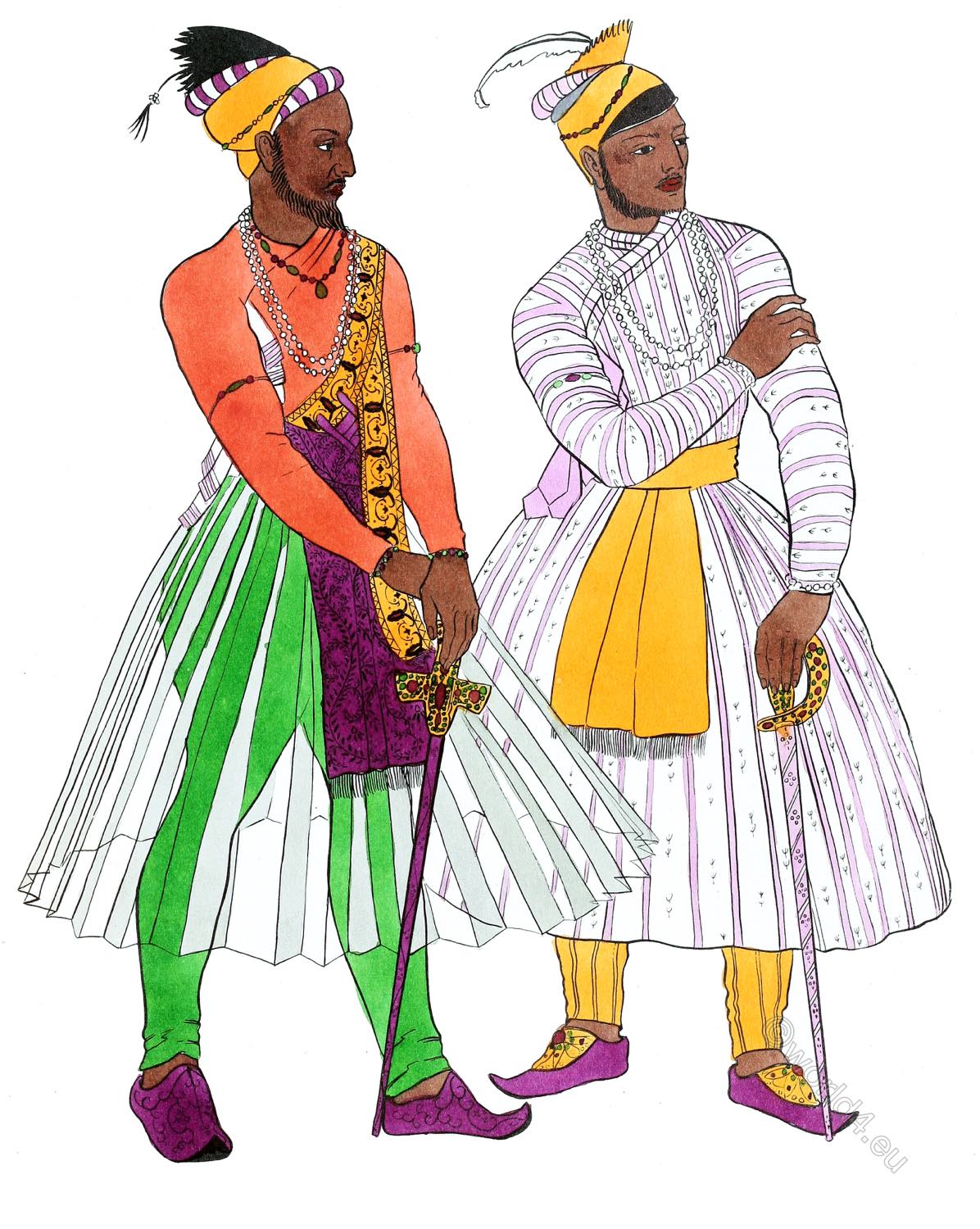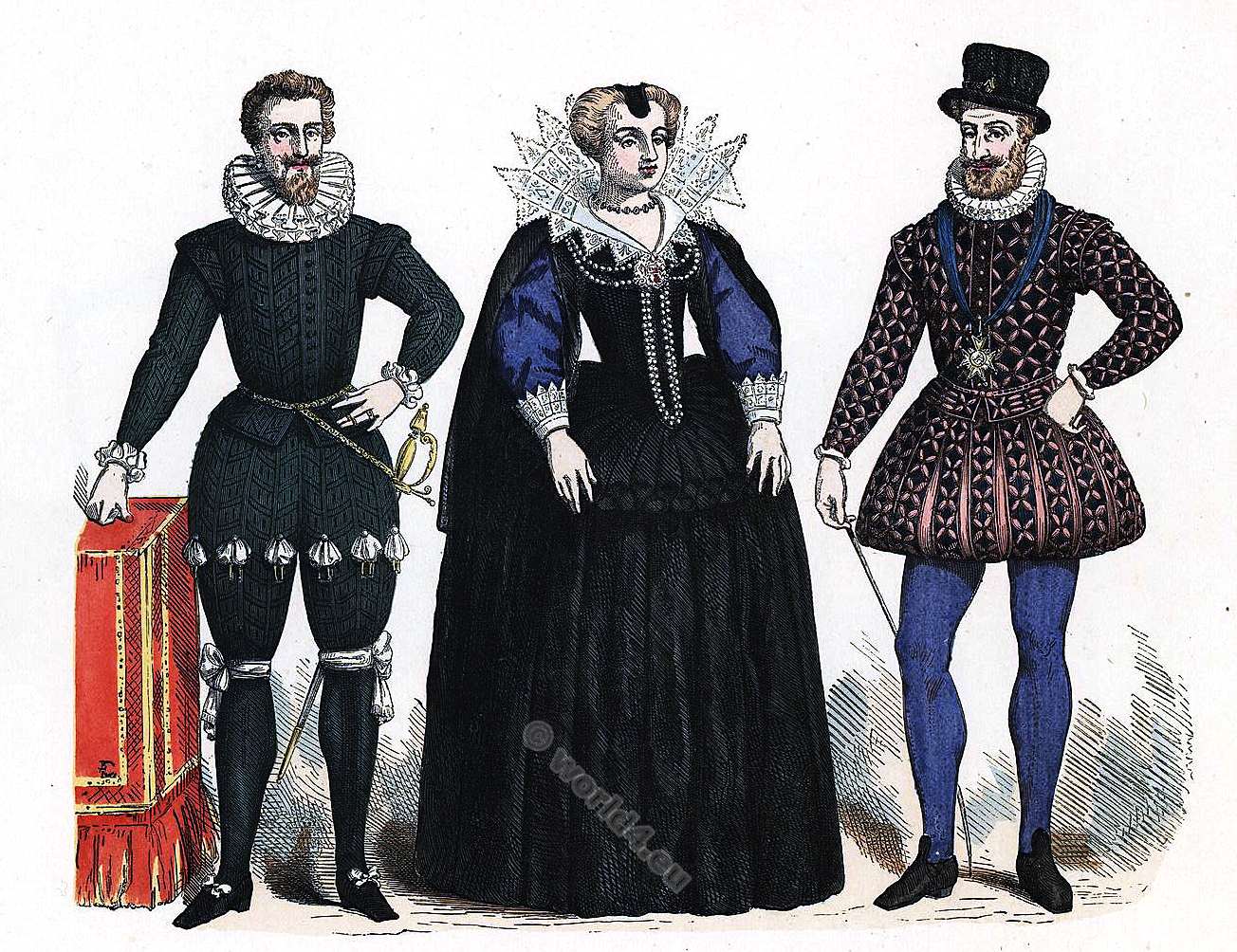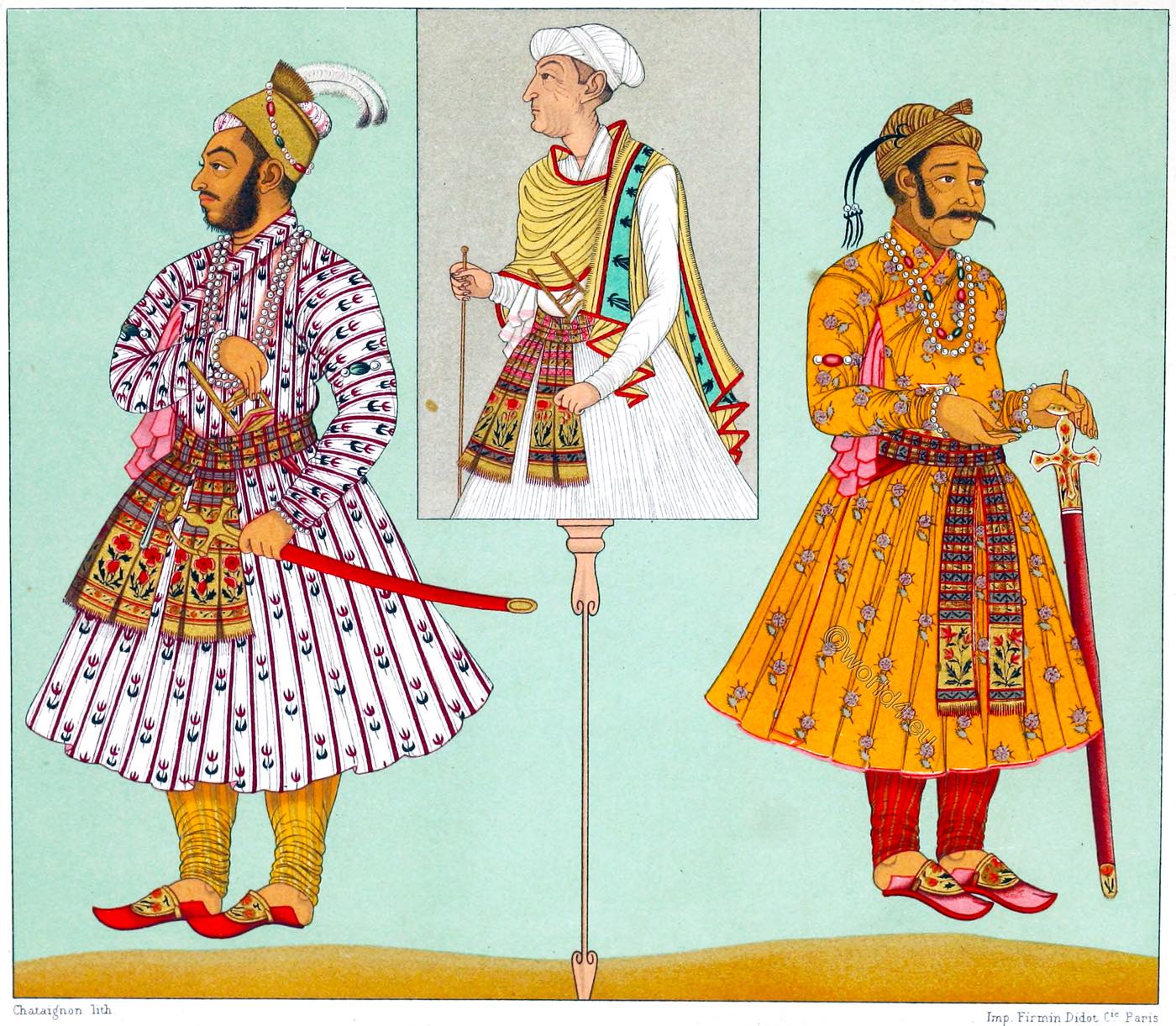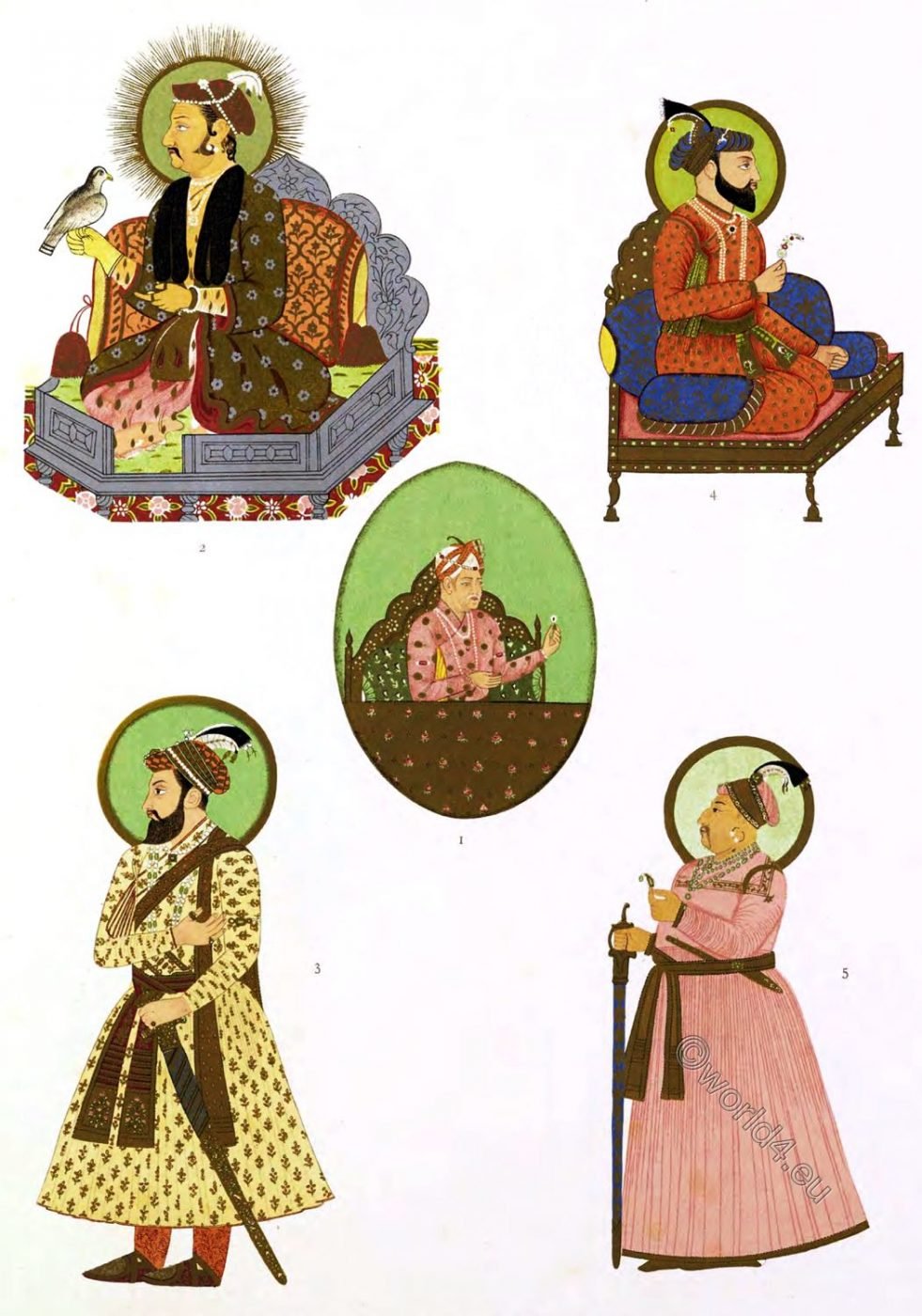
Although the portraits represent the most illustrious occupants of the Imperial throne, they have not been chosen mainly for that reason, but because in every case the person represented is wearing interesting examples of jewellery.
The Mughal Empire was a state existing on the Indian subcontinent from 1526 to 1858. The heartland of the empire lay in the north Indian Indus-Ganges plain around the cities of Delhi, Agra and Lahore. At the height of its power in the 17th century, the Mughal Empire encompassed almost the entire subcontinent and parts of present-day Afghanistan.
The pictures have been copied from authentic originals which are in the possession of Rajput chiefs.
- Abul Fateh Jalaluddin Mohamed Akbar, born A. D. 1542; reigned from 1556 to 1605. Blochman, in his notes on Badaoni 1) and the religious views of the Emperor Akbar, observes that he appeared in public with the mark which Hindus put on the forehead.
In my book on “The Rulers of India and the Chiefs of Rajputana,” I have reproduced a portrait which is probably unique, showing the emperor wearing such a mark, and have therefore selected another one for the present work. Badaoni also refers, as I have already noted, to the fact that on the festival of the eighth day of Virgo, when Akbar appeared in the Audience Hall with the marks on his forehead, several Brahmans tied, by way of auspiciousness, a string, with jewels on it, round his hands. This was the Rakhi.
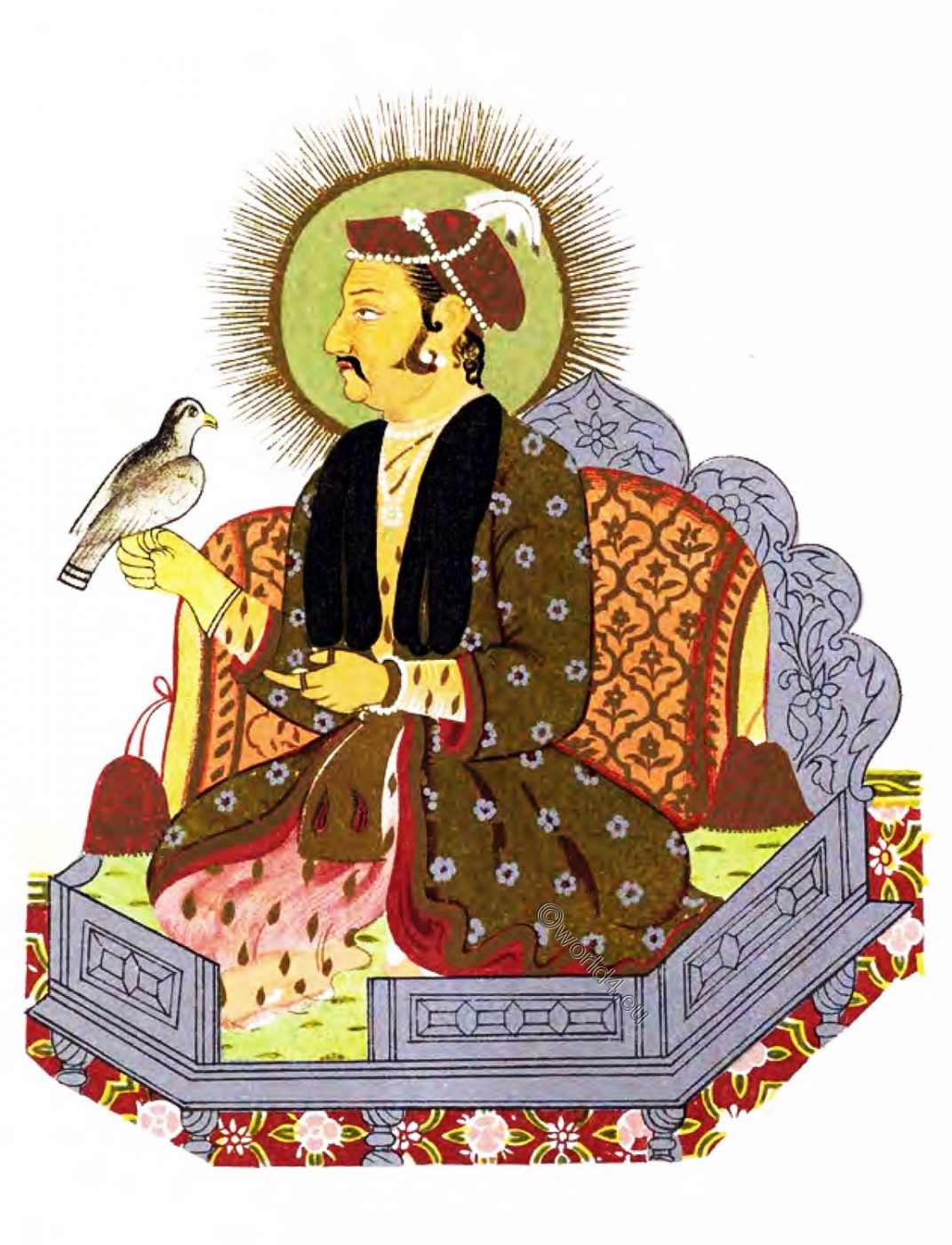
2. Nuruddin Mohamed Jahangir, born 1569; succeeded 1605; died 1627. In Purchas’ ” Pilgrims,” it is stated that his jewels were worn in rotation; those which were worn one day not being worn again for a twelvemonth. Reference is also made to the eight chains of beads, each containing four hundred, which he used as rosaries, no doubt to repeat the names of the Almighty.
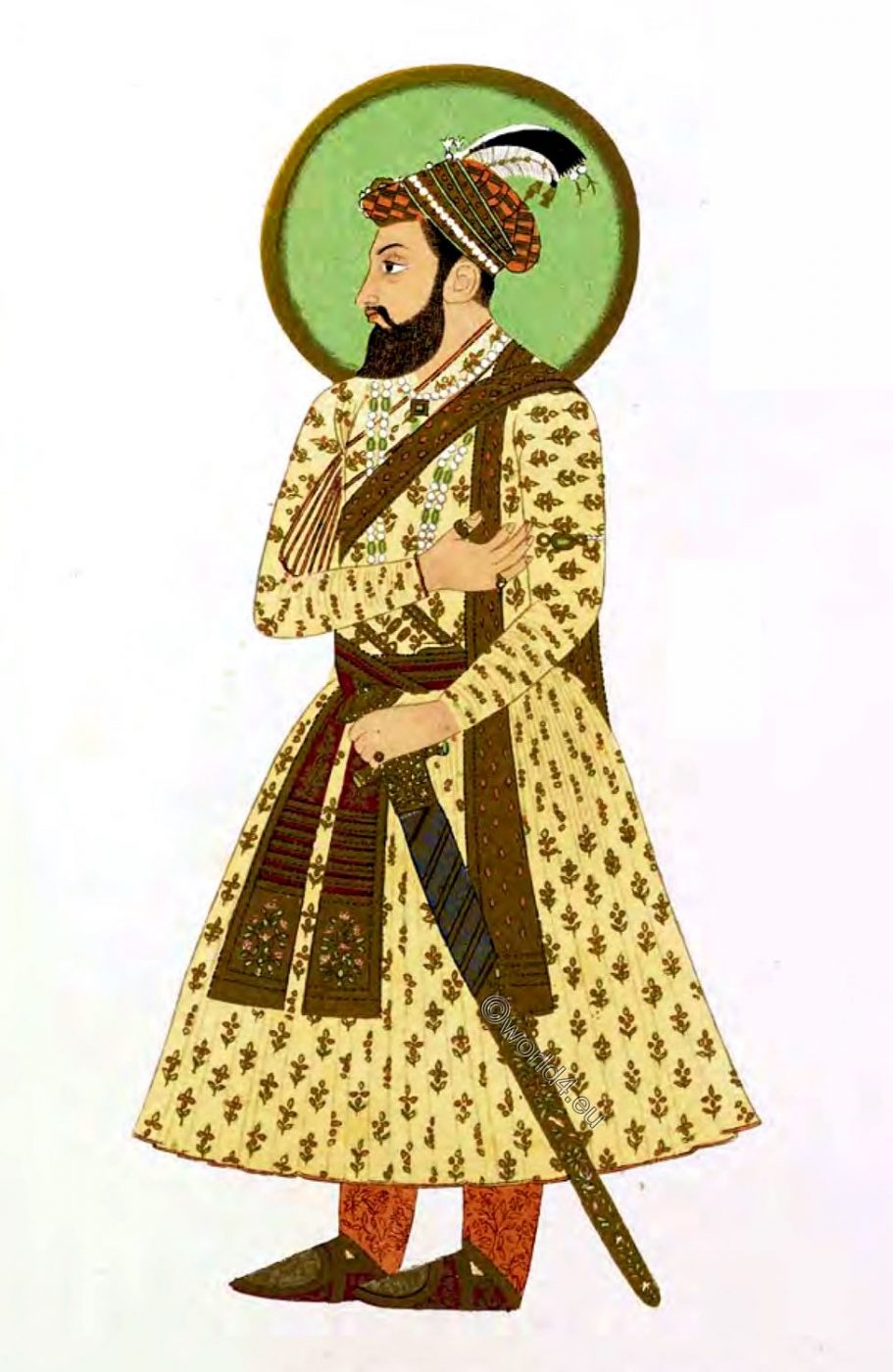
3. Mirza Khuram, who succeeded to the throne under the title of Shah Jahan, and surnamed Shahab-ud-din Mohamed Sahib Kiran Sani; born 1593; succeeded 1627; deposed 1658; died 1666. From the jeweller’s point of view, he is most notorious for the construction of the Peacock throne, which Tavernier valued at six millions and a half pounds sterling. The Taj Mahal, which he built, may be looked upon as almost a colossal jewel, because the precious marble was profusely adorned with gems.

4. Alamgir I., surnamed Abul-Záfar-Muhi-ud-din Mohamed Aurangzeb; born 1619; succeeded 1658; died 1707. An Italian, in 1694, saw him on his throne, wearing a white turban tied with a gold web, and ornamented with one very large emerald surrounded by four smaller ones.
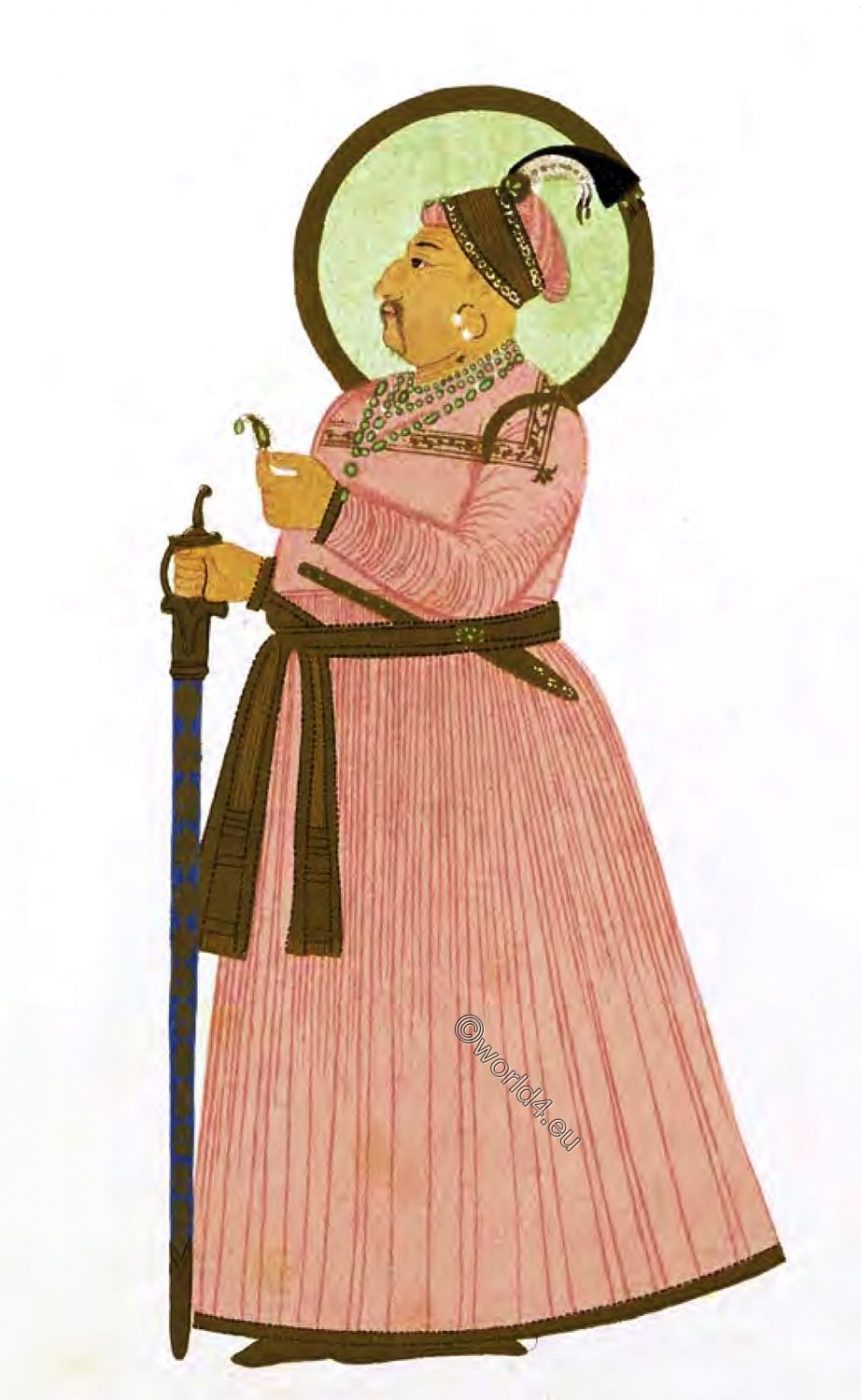
5. Mohamed Shah, surnamed Roshan Akhtar, or the “brilliant star”; born 1702; succeeded 1719; died 1748. In his reign, Nadir Shah, the ruler of Persia, invaded India, and conquered Delhi in 1739, from which he took away spoil computed at eighty million pounds sterling, and jewelry of untold value, some of which (including the remains, at least, of the Peacock throne) is probably still in Persia.
1) Abdul Qadir Badayuni (c.1540–1605) was a historian and translator who lived in the Mughal Empire. He translated the Hindu works, the Ramayana and the Mahabharata. As an Orthodox Muslim, however, he strongly opposed the reforms of Akbar and the elevation of the Hindus to high office.
Source: Indian Jewellery by Thomas Holbein Hendley. Journal of Indian Art, 1909.
Ulwar and its art treasures by Thomas Holbein Hendley. London: W. Griggs 1888.
Related
Discover more from World4 Costume Culture History
Subscribe to get the latest posts sent to your email.

